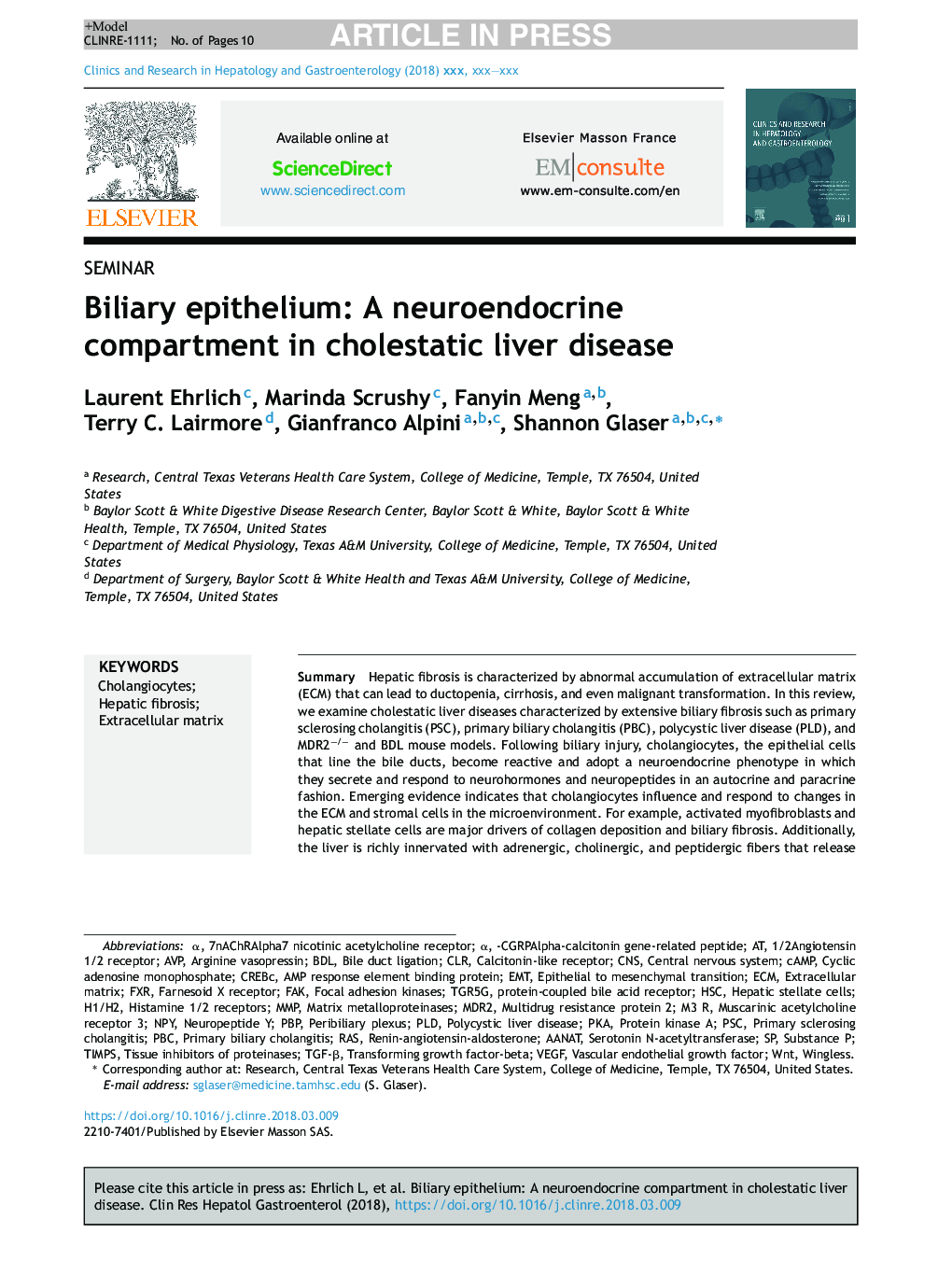| Article ID | Journal | Published Year | Pages | File Type |
|---|---|---|---|---|
| 8963974 | Clinics and Research in Hepatology and Gastroenterology | 2018 | 10 Pages |
Abstract
Hepatic fibrosis is characterized by abnormal accumulation of extracellular matrix (ECM) that can lead to ductopenia, cirrhosis, and even malignant transformation. In this review, we examine cholestatic liver diseases characterized by extensive biliary fibrosis such as primary sclerosing cholangitis (PSC), primary biliary cholangitis (PBC), polycystic liver disease (PLD), and MDR2â/â and BDL mouse models. Following biliary injury, cholangiocytes, the epithelial cells that line the bile ducts, become reactive and adopt a neuroendocrine phenotype in which they secrete and respond to neurohormones and neuropeptides in an autocrine and paracrine fashion. Emerging evidence indicates that cholangiocytes influence and respond to changes in the ECM and stromal cells in the microenvironment. For example, activated myofibroblasts and hepatic stellate cells are major drivers of collagen deposition and biliary fibrosis. Additionally, the liver is richly innervated with adrenergic, cholinergic, and peptidergic fibers that release neurohormones and peptides to maintain homeostasis and can be deranged in disease states. This review summarizes how cholangiocytes interact with their surrounding environment, with particular focus on how autonomic and sensory regulation affects fibrotic pathophysiology.
Keywords
RASFXRPBCCLRWntCholangiocytesAVPpKaBDLNPYPSCFAKECMHSCPBPMdr2PLDTGF-βTIMPsMMPcAMPprimary biliary cholangitisfarnesoid X receptorCyclic adenosine monophosphateepithelial to mesenchymal transitionWinglesspolycystic liver diseasetransforming growth factor-betaEMTCNSrenin-angiotensin-aldosteroneSerotonin N-acetyltransferaseHepatic stellate cellscentral nervous systemAANATVascular endothelial growth factorVascular Endothelial Growth Factor (VEGF)Hepatic fibrosisExtracellular matrixSubstance PMatrix metalloproteinasesarginine vasopressinMultidrug resistance protein 2protein kinase Abile duct ligationPrimary sclerosing cholangitisCalcitonin-like receptorNeuropeptide Y
Related Topics
Health Sciences
Medicine and Dentistry
Gastroenterology
Authors
Laurent Ehrlich, Marinda Scrushy, Fanyin Meng, Terry C. Lairmore, Gianfranco Alpini, Shannon Glaser,
